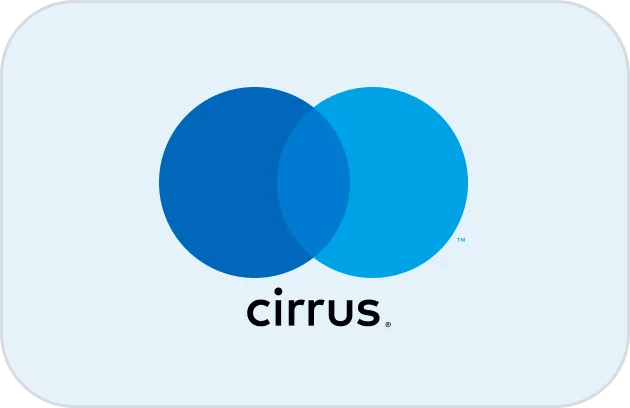If your Canadian contact operation still treats uptime as luck and compliance as a binder on a shelf, you’re running a silent churn engine. Canada’s consumers expect anytime reachability from Vancouver to St. John’s, executives expect defensible numbers, and regulators expect data discipline by default. This field guide shows how to architect a cloud call center that rides out carrier blips, proves lawful data handling, scales bilingual support, and turns every conversation into a measurable business outcome. We’ll anchor on reliability patterns, routing for service levels that actually hold, analytics leaders will trust, and a rollout plan you can execute in quarters—not years.
Canada Reality Check: Geography, Volume, Bilingual Service, and Why Reliability Pays
Canada isn’t just “North America with snow.” It’s low-latency demands across a massive geography, regional carrier variability, bilingual obligations, and seasonal volume swings from retail peaks to travel surges. When the core wobbles, abandon spikes, repeat contacts multiply, and leaders lose confidence in the numbers. The correct response isn’t “more features”; it’s an operational system built on a stable telephony backbone, intent-aware routing, callback windows you actually keep, and analytics that reconcile. Start with the two levers you control today: downtime-resistant call handling and a global PBX/VoIP phone system that shortens media paths and diversifies carriers. Once stability lands, every other improvement sticks: agent coaching, proactive messaging, even ambitious self-serve.
On the compliance side, Canadian buyers expect privacy by design: minimize data, redact at capture, prove lawful bases for outbound, and keep an audit-ready trail of what changed and why. The trick is to bake these into defaults so agents can’t “forget” the rules in a rush. Do that, and you’ll see fewer repeat contacts, cleaner QA, and executives who finally trust their dashboards.
| Priority | Canadian Reason | Metric You Expect to Move |
|---|---|---|
| Carrier diversity + regional edges | Cross-country calls without jitter spikes. | Drop rate ↓; MOS stability ↑ |
| Predictive callback windows | Weather/season peaks load lines. | Abandon −20–40%; CSAT ↑ |
| Intent + entitlement routing | VIP/at-risk customers skip general queues. | FCR ↑; misroutes ↓ |
| Bilingual language routing (EN/FR) | Faster rapport and fewer repeats. | AHT ↓; CSAT ↑ |
| One conversation timeline | Context across voice/chat/email/SMS. | 7-day repeats ↓ |
| In-call agent assist | Standardise tone, reduce wrap. | Wrap time −30–60s |
| Knowledge as single-page flows | Less alt-tab; fewer policy errors. | AHT variance ↓ |
| Proactive outage/delay comms | Storms/logistics delays hit inbound. | Avoidable contacts −25–45% |
| Redaction at capture | Payment & PII never land on storage. | QA defects ↓; audit time ↓ |
| Consent registry for outbound | Lawful basis proof by channel. | Compliance incidents ↓ |
| Windowed workforce reforecast | Adjust intraday to real demand. | SLA breaches/day ↓ |
| Case merge across channels | One truth per issue. | Dupes ↓; reopen ↓ |
| Multi-number caller ID trust | Pickup without spam flags. | Connect rate ↑ |
| Queue-aware bot deflection | Shift simple intents off voice. | Cost/contact ↓ (CSAT stable) |
| Callbacks as promises (not hopes) | Trust requires punctuality. | Abandon ↓; NPS ↑ |
| Supervisor whisper/barge | Live rescue for saves. | Escalations ↓; save revenue ↑ |
| Disposition→workflow mapping | No “dead” outcomes. | Time-to-resolution ↓ |
| Customer-visible timelines | Transparency deflects status calls. | Inbound on open cases ↓ |
| Mute/hold reason capture | Expose silent waste for coaching. | AHT ↓; coaching focus ↑ |
| After-hours expectation set | Clear promise beats silence. | Night repeats ↓ |
| Auto case from app errors | Reproduce fast; resolve faster. | First-time fix ↑ |
| Knowledge freshness SLAs | Stale articles retire by default. | Wrong-answer rate ↓ |
| One-click channel switch | Chat→voice without context loss. | AHT ↓; CSAT ↑ |
| “Next step” promise tracking | Silence kills trust; prevent it. | 7-day repeats ↓ |
| Redaction pause/resume | PCI moments handled safely. | Compliance exceptions ↓ |
| Queue health wallboards | Shared truth → faster action. | Interval misses ↓ |
| Auto-translate with review | Speed for FR/EN edges. | Handle time ↓; accuracy ↑ |
| “Fix queue” days | Pay down reliability debt. | Backlog age ↓ |
| Agent checklists in UI | Replace improvisation. | FCR ↑; QA scores ↑ |
| Regional SLAs by entitlement | Premium tiers feel it. | Save rate ↑; churn ↓ |
Reliability Architecture: Build a Core That Doesn’t Blink
Every Canadian win starts with a core that rides out noise: multi-region media, carrier diversity, automatic failover, and health checks you actually act on. Keep the call path short and predictable; instrument jitter, packet loss, and disconnect cause codes so an engineer sees the problem before agents feel it. Design like you’ll be audited for uptime: publish your recovery objectives, document failovers, and practise them. The playbook for moving from “we have lag” to “we’re fine” is here: lag→zero downtime architecture. If you’re still carrying legacy trunks, bridge cleanly using the PBX migration guide so today’s reliability work isn’t blocked by yesterday’s hardware. As you expand channels and automation, remember: telephony is software now—treat it as code with feature flags and rollbacks.
Once the core is steady, turn to capability that pays immediately. Predictive routing creates hours from minutes by avoiding misroutes, a theme captured in why predictive routing matters. And for modern media/control flows, study SIP→AI evolutions so your stack can support real-time assist without collapsing under load.
Routing & SLAs: Canada-Grade Throughput for Peaks and Bilingual Service
Routing is where churn dies or grows. Build intent-first triage in the first 5–10 seconds, attach a confidence score, then route by entitlement and language—English, French, and any additional languages you serve. Keep “stickiness” so follow-ups return to the best-fit agent; time-box with fallbacks so the queue keeps moving. Replace hold purgatory with windowed callbacks and priority re-queue at slot start. Across intervals, staff to reality, not averages; commit to daily/weekly/monthly cadences that change routing rules based on observed cohorts and publish the deltas so everyone can see learning in action.
If you need a single system guide that ties these pieces together—from pipelines to analytics—start with the end-to-end call center blueprint, then harden peak reliability patterns using guidance from downtime-proof design. The result: fewer “sorry, wrong team” moments, stable SLAs through Canadian peak seasons, and leaders who finally see cause→effect in their dashboards.
Data Discipline: Privacy by Default, Evidence by Design
Canadian buyers don’t want slogans; they want proof. That means redaction at capture (not after storage), identity verification that is fast and consistent, and event-level lineage that shows exactly what happened: ConversationStarted → IntentPredicted/Confirmed → Routed → Connected → Resolved → SurveySubmitted. Make “why we store this” explicit for each field, document retention, and ensure erasure workflows actually erase. Default to minimum data needed for integrations and prove lawful basis for any outreach. When you operate this way, QA finds fewer defects, auditors leave faster, and leaders stop second-guessing the truth on the exec page.
If you need a reference on how convergence of contact centre and telephony affects these choices, review SIP→AI futures, and map your reliability layers back to the global phone system so routing and consent rules are enforced where calls actually flow.
AI, QA & Analytics Canadian Leaders Will Actually Believe
AI amplifies whatever it sits on. Stabilise first, then add real-time agent coaching with AI assist and 100% conversation auditing via AI-first QA. Use summaries to produce accurate wrap codes and auto-suggest knowledge updates. Report using an events model executives can defend; your north star is fewer repeats within 7 days, lower handoffs per resolution, stable abandon through incidents, and revenue/contact that climbs as deflection nudges routine intents into self-serve. For consensus on the metrics that matter in 2025, align your scorecard to the benchmark set and wire your data to capture them without manual spreadsheet gymnastics.
Modern performance also depends on the boring glue—integrations. Choose the ones that remove clicks and cut handle time, not logos for a slide. Practical pairings are outlined in the 100-integration guide; connect identity, orders, billing, logistics, and consent with the minimum data necessary, and you’ll see faster resolutions without compliance risk.
A 120-Day Canadian Rollout You Can Actually Deliver
Days 1–14 — Foundations. Stand up voice/chat/email/SMS with unified routing and verified identity. Harden the core using lag→zero patterns, and keep call paths short on a global phone system. Mirror events to your warehouse; publish a simple intraday page everyone believes.
Days 15–45 — Throughput & Quality. Add stickiness + time-boxed fallbacks and switch on windowed callbacks. Launch five-behaviour QA (greet/verify, discover, resolve, next step, compliance) and coach one conversation per agent weekly. Split queues by intent and entitlement so premium/at-risk callers never see general lines. If legacy trunks hold you back, use the PBX migration playbook to bridge without regressions.
Days 46–90 — AI & Knowledge. Turn on real-time coaching, convert solved cases into articles, and consolidate knowledge into single-page flows. Trigger proactive messages for payment retries, weather/logistics delays, and outage markers. Align experiments to routing, callbacks, knowledge, and proactive signals in four-week cycles.
Days 91–120 — Business Proof. Connect outcomes to CRM/billing: refunds avoided, saves, plan changes, collections. Publish a defensible exec deck: churn prevented, cost/contact vs. deflection, revenue/contact by channel. Lock a quarterly slate of five experiments; promote winners to default and retire losers fast. For high-volume outbound sales pods, borrow design from max-revenue dialer blueprints so compliance and speed scale together.
When this cadence sticks, incidents become non-events, peaks feel routine, and leadership discussions move from “are the numbers right?” to “what will we change next?”—the hallmark of a mature Canadian operation.
Pitfalls & Executive Scorecard: How Canadian Programmes Stall (and How to Spot Wins)
Pitfall 1: Deflection without dignity. Bots that won’t hand off kill trust. Require clear exits and track bot CSAT separately. Pitfall 2: Vanity dashboards. If numbers don’t reconcile with your events schema, executives won’t act—fix the data model before adding widgets. Pitfall 3: Over-pacing voice. Flooding lines to “fix” ASA creates abandon swings; use callbacks and priority queues. Pitfall 4: Script sprawl. Agents improvise when knowledge is hard to find; compress to single-page flows. Pitfall 5: Treating compliance as training, not defaults. In 2025, only enforced defaults count.
Judge success with a tight scoreboard: repeats within 7 days, handoffs per resolution, callback kept rate, abandon, FCR, AHT variance, revenue/contact, cost/contact. Align your definitions to 2025’s benchmark metrics, then wire the glue that removes clicks following the integration guide. If an item on your exec page cannot be reproduced from the events model, it doesn’t belong there.
FAQs — Canada Cloud Call Centers That Customers (and Auditors) Trust
What’s the fastest reliability win for a coast-to-coast operation?
How do we sustain bilingual service without doubling AHT?
What’s “privacy by default” in practice for Canadian buyers?
Where should we place AI first without risking compliance?
How do we measure success without dashboard drama?
Which integrations actually save Canadian agents time?
What’s the simplest way to show reliability to a Canadian buyer?
When your Canadian stack treats reliability, data, and coaching as design constraints—not add-ons—incidents become boring, peaks stop being scary, and leadership debates shift from “are we sure?” to “what’s the next improvement?” From there, expanding to global scale is just repeating the pattern with tighter loops.








